As winter draws to a close, Japan's camellias burst into bloom like red lights on the evergreen trees. Camellias are such a hallmark of spring that the character for them is written
using the ideographs that mean "spring tree".
The yabu-tsubaki is a species of camellia that grows wild on Oshima Island. There is a camellia festival held here between mid-January
and late March each year where you can see different varieties of camellia in bloom. Those who explore more of Oshima will find the kinds of dramatic views you can only get on a volcanic
island. We invite you to discover this wonderful world for an early taste of spring.
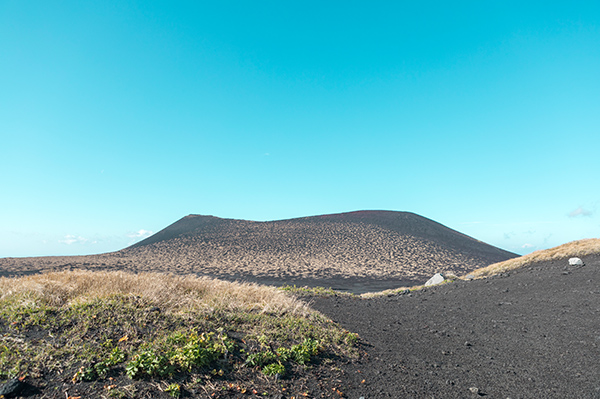
The volcanic island of Oshima is home to Japan's only desert.
The island of Oshima was formed through the activity of a volcano on the seafloor. Every time it erupted,
fine lava particles and volcanic ash accumulated on the ground, creating a black-sand area. Urasabaku, located on the eastern side of Mt. Mihara is a desolate place that offers a
completely different scene from the lush greenery found on the rest of the island—so much so that it gives the illusion of having stepped onto another planet. If you actually walk
through Urasabaku, you're sure to be overcome by the vastness of the place and the wonders of nature.
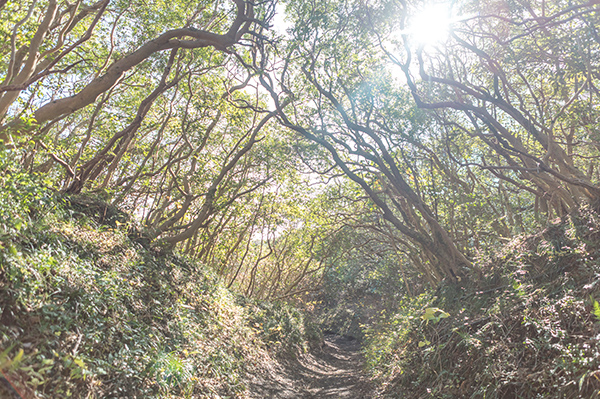
Volcanic ash is actually closely tied to Oshima's wild camellias. It is thought that the excellent drainage that volcanic ash soil provides creates the ideal conditions for wild camellias to grow. They've long been an indispensable part of island life, with islanders planting them around their homes as shelter from the strong ocean winds, collecting the branches from camellias in forests to make into charcoal, or using the seeds they produce in autumn to make oil.
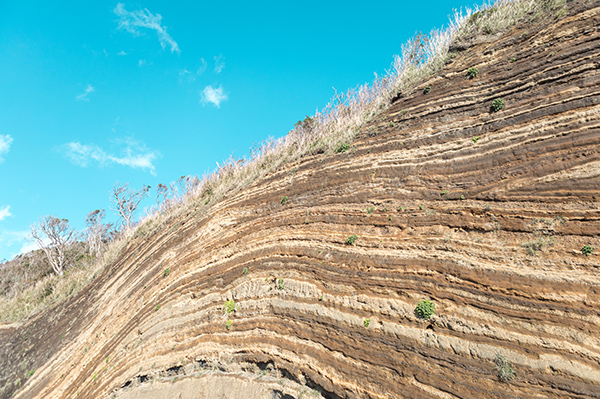
From Tsuki-to-Sabaku Line road, get on the Oshima loop road towards Motomachi Port. On your right, you'll see a series of cutaway sections showing geological layers.
The
layers show deposits of pyroclastic fall from the volcanic eruptions that have occurred every one to two hundred years over the last 15,000 years or so, creating a pattern that looks
just like a giant Baum cake. They were discovered when the mountain was cut away to build the road, and serve as a kind of historical record of the planet. When you think about the
incredibly long history involved in creating the island, you can only stop and stare with the uncanny sense that you've slipped back in time.
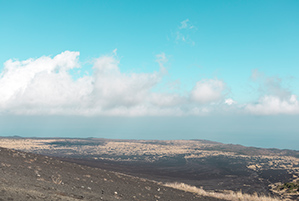
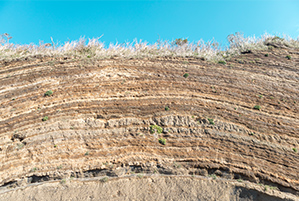
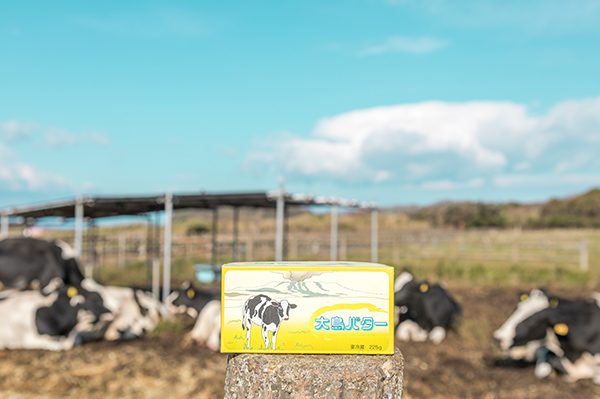
Make sure to stop and pick up some cold and fresh souvenirs before you board the ferry home. And if you visit Oshima, don't leave without picking up some amazing Oshima butter!
Oshima
butter is made only from sea salt and milk of Holstein dairy cows raised on the island. It's incredibly rich—so much so that it takes six or seven liters of milk to make each stick!
The more you make, the more labor-intensive it gets, so Oshima Gyunyu only makes one batch a week. Company president Yoshinori Shirai told us that slices of the butter are delicious
on crackers. You can even eat it plain for a deliciously milky flavor.
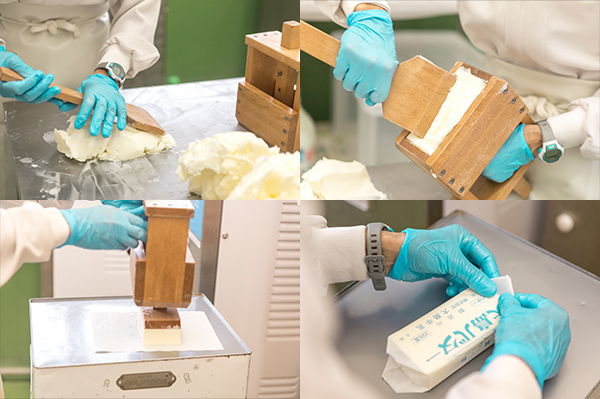
Oshima was once called "dairy island", but the industry declined due to price competition and falling consumption. When it happened, Shirai was one of the people who insisted that
milk could not disappear from Oshima. He explained why he was so concerned. "Milk is a daily part of school lunches," he said. "It's not just good for kids' health, it's also
critical to other important Oshima industries, like its milk rice crackers."
Today, Oshima butter is well-known among food connoisseurs for the reliability of its premium
ingredients, the simplicity of being made with only fresh milk and salt, and the flavorful sea minerals it contains. It's even used to make Nippon no Croissants at Bakery BLUE TREE,
located at Happo-en in Shirokanedai, Tokyo.
Because so little Oshima butter is produced and because it has so many fans, it sells out quickly as soon as it goes on sale. You'll
be lucky to find it at a supermarket or at the Buratto House farmer's market adjacent to Oshima Gyunyu. If you do see some though, make sure to buy it as a souvenir to take home! You
can also buy it directly from Oshima Gyunyu.
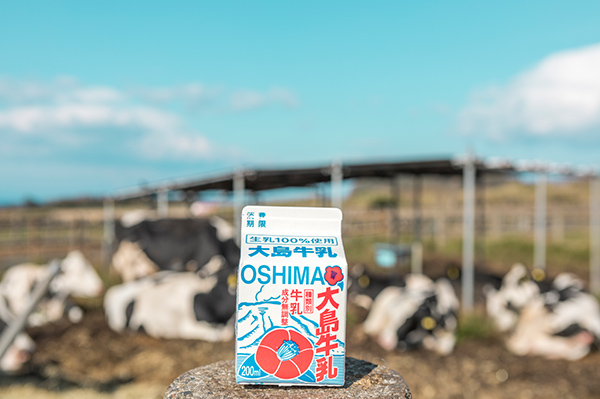
[DATA]
Oshima Gyunyu
Address:87-1 Okata Shinkai, Oshima, Tokyo
Closed:Saturdays and Sundays
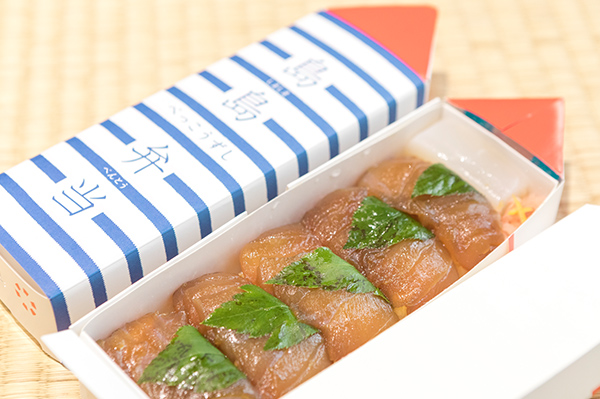
Last but not least, make sure to pick up a bekko-zushi bento box from Shima-Shima Bento. You can order them in advance from Izushichi Maru restaurant, which has locations inside the
passenger waiting areas at both Motomatchi and Okata ports.Bekko-zushi is a homestyle dish native to Oshima island that is made by putting sliced fish on top of sushi rice, but
dipping the fish in a spicy-mustard soy sauce instead of adding wasabi. It gets its name from the shiny amber color (bekko in Japanese) of the sauce.Shima-Shima Bento marinates medai
(medusafish) in green chili peppers and puts it on vinegared sushi rice made with pickled plums and sesame, then tops it with ashitaba leaf for a deliciously refreshing treat. Their
bento boxes also come with salted konyaku boiled in Oshima sea salt and shiso leaf, lemon ginger, and fun Oshima snacks found in the red triangular part of the bento box.
Make
sure you pick one up on your way home so you can enjoy it on the ferry or when you get back!
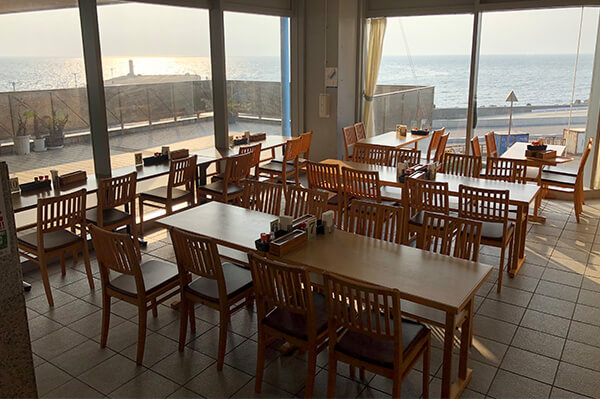
[DATA]
Izushichi Maru
Address:Motomachi Port Terminal 2F 1-18-3 Motomachi, Oshima, Tokyo
Hours: When ferries are arriving or departing (shops open when ferries are
scheduled to depart from that port)
Closed: Open every day except when ferries are not running
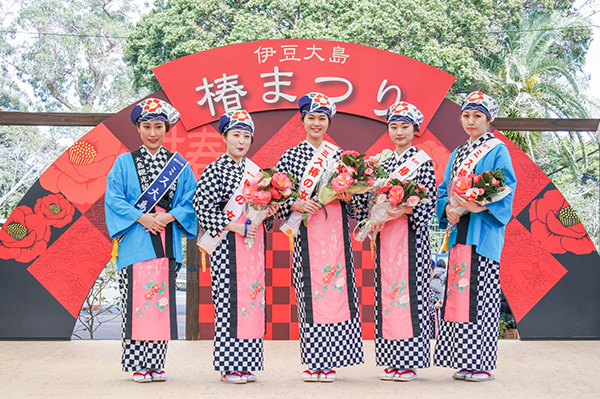
When the song "Anko Tsubaki wa Koi no Hana" by singer Harumi Miyako was released in the mid-1960s, it was meant to support the island of Oshima, and it ended up catching on like wildfire. The word anko is a word from the Oshima dialect that means "young ladies". On Sundays and public holidays during the 65th Izu Oshima Camellia Festival (Sunday, January 26 through Sunday, March 22, 2020), camellia flowers and young ladies wearing kimono and holding colorful ribbons will smile and send off big ships.
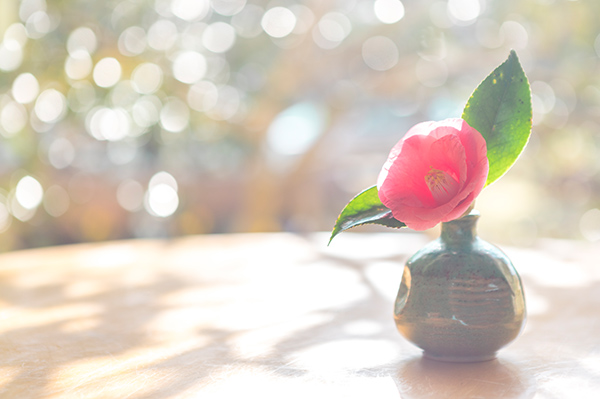
A Camellia Queen contest is also held, where ladies can rent anko outfits to wear. There are also workshops where you can make handkerchiefs or scarfs using camellia flower petal dye
and take your creations home with you. It is a festive time on the island, the Tsubaki-hana Garden introduced earlier serves as one of the venues for the festival.
[DATA]
65th
Camellia Festival
Event dates:Sunday, January 26 through Sunday, March 22, 2020
https://www.tokaikisen.co.jp/tsubaki_festival/
Spring truly is the best time to visit Oshima if you want to truly experience the volcanic island's distinctive plants and scenery when the red camellias bloom.
Planning and editing: Co-Trip Editorial Department
Reporting and text: Mori-Kotori
Photos: tsukao
Note: Information is current as of December, 2019.